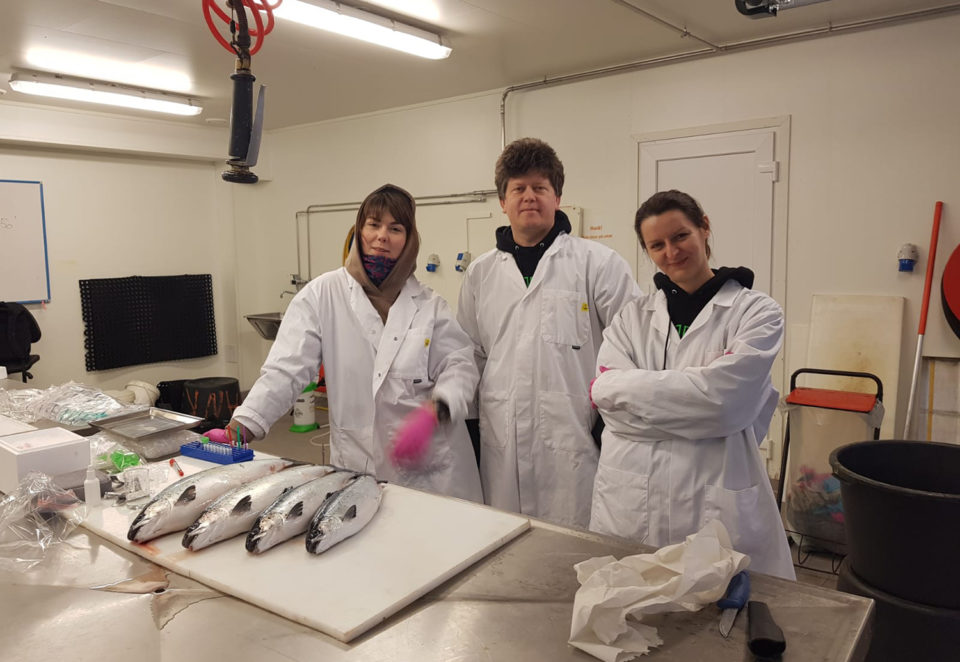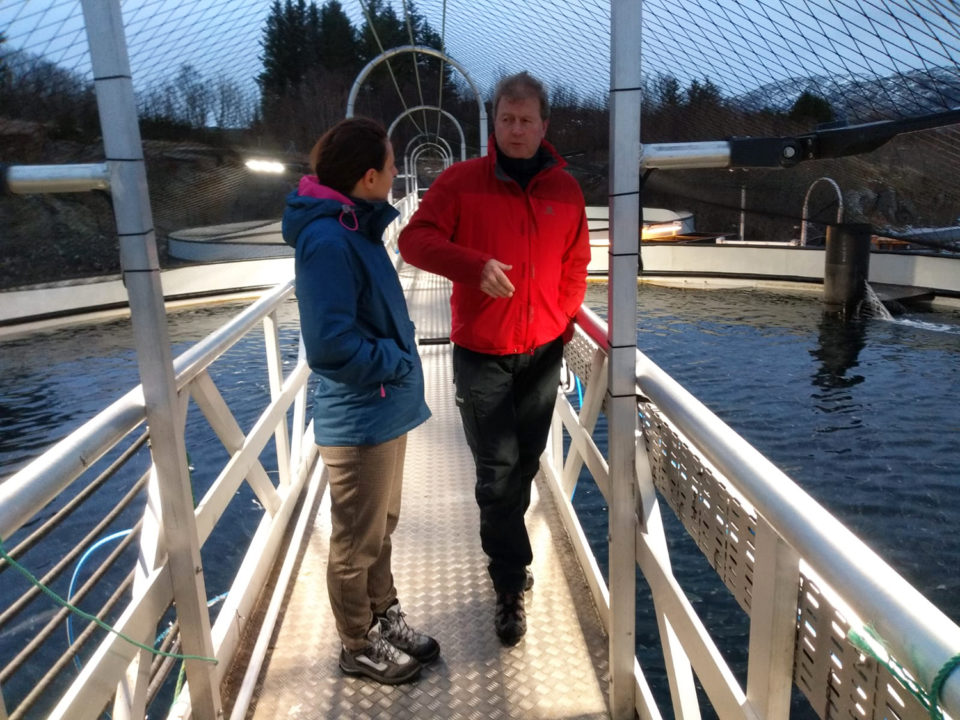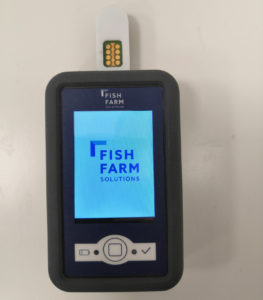Using technology created to identify human diseases like the novel coronavirus, Fish Farm Solutions of Poland is targeting its rapid diagnostic kits at seven salmon diseases.

Norway, the world’s largest farmed salmon producer, boasts an advanced, consolidated industry that benefits from strong government regulation, academic support and investment capital. Despite these technological and economic advantages, a range of infectious diseases remain troublesome.
At present, the primary antagonist is pancreatic disease (PD), caused by salmon alphavirus, which has plagued producers of both Atlantic salmon (Salmo salar) and rainbow trout (Oncorhynchus mykiss) and has been present in Norway since at least 2003. The Norwegian Veterinary Institute reported in 2017 that 36 percent of the country’s farms suffered from PD, based on diagnostic submissions from nearly 500 farms.
A Polish company believes a tool it’s developing can turn the battle against PD and six other common diseases on salmon farms by speeding up the diagnostics process. Under normal circumstances, farmers that suspect the presence of a disease must wait up to two weeks for laboratory results to confirm their suspicions. By the time results are confirmed, it may too late to stop the spread.
Fish Farm Solutions LLC says it can chop the wait time down to just 5 to 10 minutes while cutting costs significantly as well. With offices in Wroclaw and Gdańsk, Poland, the company is fast-tracking the development of its proprietary solution, FishSensor, which aims to simplify a rather complicated process. The technology at play is known as electrochemical spectroscopy impedance, used to construct electrodes coated with biological molecules that recognize specific pathogens. It is already used in tests on humans to identify influenza viruses, with a sensitivity that is comparable to the molecular RT-PCR (reverse transcription polymerase chain reaction) method carried out labs, widely considered as the gold standard.
Co-founder and CEO Katarzyna Pala, Ph.D., told the Advocate that Fish Farm Solutions was formed in 2017 by members of her other company, SensDx (formerly Eton Group), which is rooted in human health diagnostics and is currently developing rapid test kits for the ongoing coronavirus (COVID-19) pandemic sweeping the globe. Pala said that stay-at-home and social distancing measures in place are slowing the work down a bit, but she expects a product on the market this year.
“Working in the lab is difficult, but now our people are working at home,” she said. “That’s the situation in Poland, everyone is staying home.”
Fish Farm Solutions has an exclusive licensing deal for the technology, which Pala and her associates developed with a blend of private and public money the Polish government made available for startups and R&D projects. The company does not have any commercial customers yet and embraces the “startup” label, she said. “It’s developing rapidly, very innovative.”

Pala said she and her team discovered this new avenue in aquaculture by meeting Per Kristian Nordøy, a Norwegian entrepreneur with decades of experience working in salmon farming and who is the chairman of LetSea, one of Norway’s biggest research stations. It was there that this new technology was tested, and Pala said the trials showed the technology was 99 percent as sensitive as the PCR method. Nordøy’s company Solutio Diagnostic AS is a shareholder in the new venture.
“We needed to define the purpose [for the technology]. Working with the Norwegians, we learned a lot about the aquaculture market,” Pala said. With Nordøy’s input they compiled the list of diseases that the industry would most like to overcome in addition to PD: infectious salmon anemia (ISA), heart and skeletal muscle inflammation (HSMI), infectious pancreatic necrosis (IPN), cardiomyopathy syndrome (CMS), viral haemorrhagic septicaemia (VHS) and the bacterium Aeromonas salmonicida, which causes furunculosis.
“It’s crucial to detect these [diseases] quickly,” Pala said, particularly the ones that currently have no vaccine. “But there is no rapid technology for diagnostics on farms. [This one] is developing from the human market to the veterinarian.”
According to Nordøy, there is a great need for this technology in Norway, because of the long wait times and the high cost of laboratory testing. Farmers spend millions of kroners per year for such tests, and they’re not testing enough to be truly effective, he said.
https://www.aquaculturealliance.org/advocate/unmet-promise-pondside-pcr/
“We need to hurry this up a little bit. This [new] method is much, much cheaper,” he said. “Pancreatic disease is common in the middle of Norway-south. They are living with that. The government has said they don’t want this problem farther north, so there is a slaughter order.” Nordøy estimates the market potential for rapid testing for pancreatic disease alone at more than NOK 50 million per year (U.S. $4.77 million).
FishSensor is looking for specific proteins, which Pala explained removes the need to “amplify” the test samples. “That is why you need the clean laboratory, and people who know how to handle heart-tissue samples. We’re just detecting proteins – it’s faster and more resistant to contamination. We’re looking for one protein in a ‘soup’ of proteins. Contamination doesn’t influence much on our technology. It’s much easier to use.”

Currently, the prototype reader connects to computers through a cable, but future designs will be portable, battery-operated units that look like large smartphones. The single-use test kits are not yet complete either, but initial designs look something like USB drives that connect to the device.
Fish Farm Solutions aims to launch FishSensor in Norway by August or September of this year. Farmers, veterinarians, genetics companies and vaccine makers would all have an interest in rapid disease diagnostics, said Nordøy, who sees key post-harvest applications for the technology as well, including the ability to detect Listeria monocytogenes, to limit antibiotic usage and as an assurance for buyers.
“If you can document that the fish you buy here has not had this problem it will be an interesting area to use the technology,” he said. “If you are a buyer of salmon from Norway, you can say I don’t want to buy from some areas because of PD.”
While the initial target market for FishSensor is Norway, Pala said the company will soon expand to other regions and other species like shrimp, targeting White Spot Virus, Yellow Head Virus, Taura Syndrome Virus and Acute Hepatopancreatic Necrosis Disease (AHPND), also known as EMS (Early Mortality Syndrome).
Follow the Advocate on Twitter @GAA_Advocate
Now that you've finished reading the article ...
… we hope you’ll consider supporting our mission to document the evolution of the global aquaculture industry and share our vast network of contributors’ expansive knowledge every week.
By becoming a Global Seafood Alliance member, you’re ensuring that all of the pre-competitive work we do through member benefits, resources and events can continue. Individual membership costs just $50 a year. GSA individual and corporate members receive complimentary access to a series of GOAL virtual events beginning in April. Join now.
Not a GSA member? Join us.
Author
-

James Wright
Editorial Manager
Global Aquaculture Alliance
Portsmouth, NH, USA
Tagged With
Related Posts

Innovation & Investment
Scottish firm honing bacteriophages into aquaculture-disease assassins
Scottish biotech firm Fixed Phage aims to bottle the powers of bacteriophages to deploy these “bacteria killers” on some of the world’s most destructive aquaculture diseases.

Aquafeeds
A new nutrient for aquaculture, from microbes that consume carbon waste
Biotechnology firm NovoNutrients aims to produce a line of nutraceutical aquafeed additives as well as a bulk feed ingredient that can supplement fishmeal. Its process includes feeding carbon dioxide from industrial gas to a “microbial consortium” starring hydrogen-oxidizing bacteria.

Aquafeeds
The pink powder that could revolutionize aquaculture
KnipBio, a Massachusetts-based biotechnology startup founded in 2013, is refining the manufacturing process for a promising aquaculture feed ingredient that may one day form the foundation of the food that farmed fish eat.

Aquafeeds
Montana firm putting barley on the alternative feed ingredient menu
Aquafeed manufacturers around the world seeking alternatives to fishmeal may soon be able to turn to an abundant and underutilized crop: barley.

